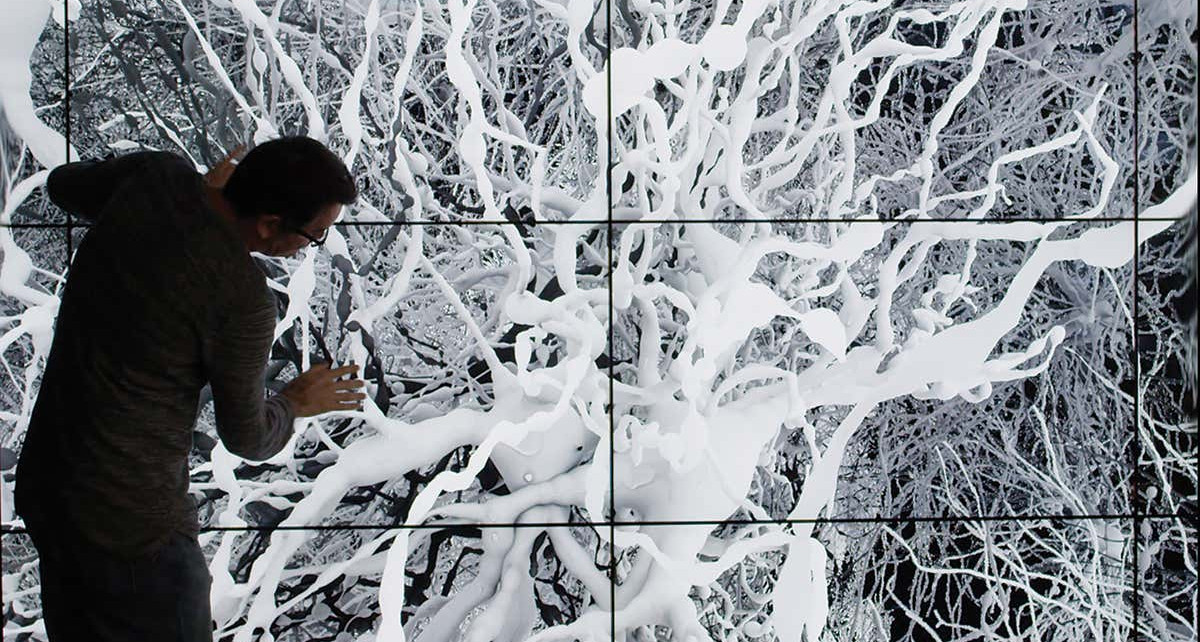[ad_1]

A virtual model of a mouse neocortex seen in In Silico
Courtesy of Sandbox Films
Noah Hutton
Advertisement
Available on demand in the US and Canada
SHORTLY after gaining a neuroscience degree, young film-maker Noah Hutton fell into the orbit of Henry Markram, a neuroscientist based at the Swiss Federal Institute of Technology in Lausanne.
Markram models brains in all their complexity. His working assumption is that since the brain is an organ, a sufficiently good computer model ought to reveal its workings, just as “in-silico” models of kidneys, livers and hearts enrich our under standing.
The world is filled with people who seem to think in different ways. Much as we might want to understand this full diversity, no one is going to dig about in a living human. Markram hopes that a computer model will offer an ethically acceptable route.
So far, so reasonable. Except that, in 2009, Markram said he would build a working computer model of the brain in 10 years. This was during a TED talk about his Blue Brain Project (BBP), set up in 2005 to model the mouse brain.
Every year for well over a decade, Hutton interviewed Markram, his colleagues and his critics as the project expanded and the deadline shifted. Hutton’s film, In Silico, is the result.
Markram’s vision transfixed purseholders across the European Union: in 2013, he won €1 billion of public cash to set up the Human Brain Project (HBP).
“It is within our power to model some organs. But the brain isn’t an organ in the usual sense”
Although his tenure at its Geneva headquarters didn’t last long, Markram is hardly the first founder to be wrested from the controls of their institute. His BBP endures: its in-silico model of the mouse neocortex is visually astounding.
Perhaps that is the problem. In a voice-over, Hutton says the HBP has become a special-effects house, a shrine to touchscreens and VR headsets, but lacks meaning “outside this glass and steel building in Geneva”.
We have heard such criticisms before. What about how the CERN particle physics lab sucks funds from the rest of physics? There is no shortage of disgruntled junior researchers blaming it for failed grant applications. CERN, however, gets results; HBP, not so much.
The problem runs deep. It is within our power to model some organs, but the brain isn’t an organ in the usual sense. By any engineering measure, it looks inefficient. A spike in the neurons can trigger the release of this neurotransmitter, except when it releases another one – or does nothing. There is bound to be some commonality in brain anatomy, but so far research shows that every brain is like a beautiful, unique snowflake.
The HBP’s models generate noise, just like real brains. In the film, there is a vague mention of “emergent properties”. Yet linking that noise to brain activity is an intellectual Get Out of Jail Free card if ever there was one: no one knows what this noise means, so there is no way to tell if the model is making the right noise.
Deep learning guru Terrence Sejnowski, who is based at the Salk Institute for Biological Studies in California, tells Hutton that the whole caper is a bad joke – if successful, Markram will only generate a simulation “every bit as mysterious as the brain itself”.
Hutton accompanies us into the yawning gap between Markram’s reasonable ambitions and the promises he makes to attract funds. It is a film made on a budget of nothing, and it isn’t pretty. But Hutton makes up for all that with the sharpest of scripts.
Sally also recommends…
Book
Matthew Cobb
Profile Books
In his dazzling history of neuroscience, zoologist Matthew Cobb explains why the metaphors we use to think about the brain stop us understanding it.
Film
Christopher Nolan
Cobb (Leonardo DiCaprio) is out to steal from your mind in a groundbreaking sci-fi flick that gave Freudian psychoanalytic theory a jaw-dropping CGI makeover.
More on these topics:
[ad_2]
Source link




